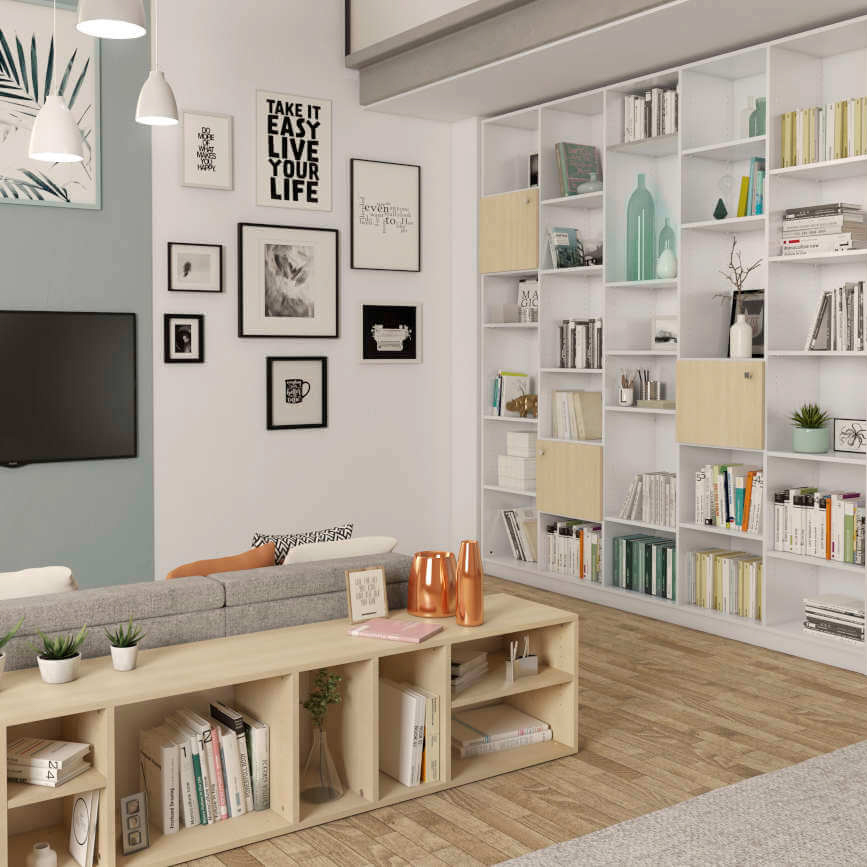The Origins of Danish Design
Danish design originates from Denmark in the mid-20th century, when a group of designers started creating furniture and household objects that were beautiful, functional, and affordable. These designers aimed to create pieces that reflected the simplicity, functionality, and elegance of traditional Danish culture. They also embraced modern industrial techniques and materials to create pieces with clean lines, organic forms, and natural materials.
The Main Characteristics of Danish Design Interior
Danish design is known for its simple lines, natural colors, and high-quality materials. The designs are functional, stylish, and timeless. Here are some of the main characteristics of Danish design interior:
Clean lines:
Danish design interior features clean, minimalist lines that are uncluttered and simple. The furniture and decor pieces are sleek and understated, with no ornate details or excess decoration.
Natural materials:
Danish designers use natural materials like wood, leather, and wool to create furniture and home decor that are timeless and durable. These materials are often left in their natural state or treated with natural oils and finishes to preserve their beauty and longevity.
Functionality:
Danish design values functionality and usefulness over aesthetics. The pieces are designed to be used and enjoyed, not just looked at. This means that each piece serves a practical purpose as well as being visually pleasing.
The Best Danish Design Interior Pieces
There are many iconic Danish design interior pieces that are highly sought after by collectors and enthusiasts. Here are some of the most notable pieces:
The Egg Chair:
Designed by Arne Jacobsen in 1958, the Egg Chair is one of the most recognizable pieces of Danish design furniture. The chair features a rounded shape and a high backrest that provides a comfortable and private space.
The Panton Chair:
Designed by Verner Panton in 1960, the Panton Chair is an iconic piece of modern furniture design. The chair is made from a single piece of molded plastic and has a sleek, organic shape.
The PH5 Pendant Lamp:
Designed by Poul Henningsen in 1958, the PH5 pendant lamp is a functional and beautifully designed lighting fixture. The lamp is made from spun aluminum and has a unique shade that diffuses the light and creates a warm glow.
Decorating Your Home with Danish Design Interior
Incorporating Danish design interior into your home is a great way to create a timeless and stylish space. Here are some tips for decorating your home with Danish design:
Choose natural materials:
When selecting furniture and home decor pieces, choose items made from natural materials like wood, leather, and wool. These materials are durable and timeless, and will add warmth and texture to your space.
Keep it simple:
Danish design interior is all about simplicity and functionality. Keep your decor and furniture pieces understated and uncluttered, and focus on creating a practical and useful space that is also aesthetically pleasing.
Add pops of color:
While Danish design interiors are generally known for their natural color schemes, adding pops of color can help add interest and personality to your space. Consider adding colorful accents like throw pillows or artwork to brighten up your space.
Danish design interior is a timeless and elegant style that has remained popular for decades. With its emphasis on simplicity, functionality, and natural materials, Danish design interiors create beautiful and practical spaces that are timeless and stylish. By incorporating iconic pieces like the Egg Chair or Panton Chair, or simply adding natural materials and simple, uncluttered decor, you can create a beautiful and functional space that reflects the elegance and sophistication of Danish design.
